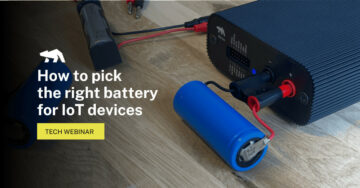
The Internet of Things (IoT) is a growing technology that continues to gain traction year after year. On the one hand, it can be helpful, but on the other hand, it carries many security threats. These threats include scalable remote attacks, side-channel attacks on cryptography, DDoS attacks, data breaches, malware, and others.
Why Use Quantum Cryptography?
Classical cryptographic algorithms, such as the Rivest-Shamir-Adleman (RSA) algorithm, can work well with classical computers. But the technology is beginning to shift towards quantum computing, and quantum computing has excellent processing power. It can easily break the current cryptographic algorithms. That is why we need to design quantum cryptographic algorithms: to prevent security breaches before quantum computers come into commercial use.
Why Secure IoT?
IoT devices could have many security loopholes covering the hardware and software, the network, or users. Hacking techniques have advanced so much over the past few years. Attackers use more state-of-the-art means, which represents a significant threat to IoT security. This is why not quantum is used at some point. The security protection measures implemented by design have to ensure that IoT devices cannot be easily hacked today. Furthermore, devices should be protected ten years from now. Long lifespans of IoT devices mean that they need future-proof defenses.
How Does Quantum Cryptography Work?
Of course, technical quantum solutions are challenging to implement in IoT devices due to technical and commercial constraints. Therefore, a few security options combine both the quantum and classical approaches.
One option keeps the current semiconductor chips but uses quantum techniques to create a unique long cryptographic key for every device. This can be done with a quantum random number generation (QRNG). It creates a noise source with a high randomness level.
Quantum computing can generate large numbers at lightning speed. Hence, the communications can be safe, and the key can be secured. This means every device will have a unique key and each key will be tough to crack. The only way to get the key would be to access the physical device configuration. But doing that without getting noticed in tamper-resistant devices would be very difficult.
Conclusion
Although quantum cryptography and quantum computing have developed quite efficiently, some more advancement is necessary for them to become a reality in commercial systems. Commercial use is a big challenge. Firstly, implementing quantum systems in IoT is expensive. Secondly, large-scale quantum apparatus is hard to afford for many organizations. Thirdly, the properties of photons restrict them from traveling long distances. If these issues can be resolved, we will have successful IoT systems with quantum cryptography. That will make them the most secure modern systems.
Finally, we strongly recommend you start from the basics to secure your IoT devices and systems by monitoring state-of-the-art of quantum cryptography before deciding to buy or use a secure component in your IoT product.
Source: https://www.iotforall.com/securing-iot-with-quantum-cryptography
- access
- algorithm
- algorithms
- Attacks
- Basics
- Beginning
- breaches
- buy
- challenge
- Chips
- commercial
- Communications
- component
- computers
- computing
- Configuration
- continues
- could
- cryptography
- Current
- data
- Data Breaches
- DDoS
- Design
- device
- Devices
- easily
- generate
- getting
- Growing
- hacking
- Hardware
- High
- HTTPS
- implement
- implemented
- implementing
- Internet
- internet of things
- iot
- iot devices
- issues
- IT
- Key
- large
- Level
- lightning
- Long
- malware
- monitoring
- more
- network
- Noise
- numbers
- Option
- Options
- organizations
- Other
- Others
- physical
- power
- Product
- protection
- Quantum
- quantum computers
- quantum computing
- Reality
- safe
- security
- security breaches
- Security threats
- semiconductor
- shift
- So
- Software
- Solutions
- speed
- start
- successful
- Systems
- Technical
- techniques
- Technology
- The Basics
- threats
- today
- users
- without
- Work
- would
- year
- years









